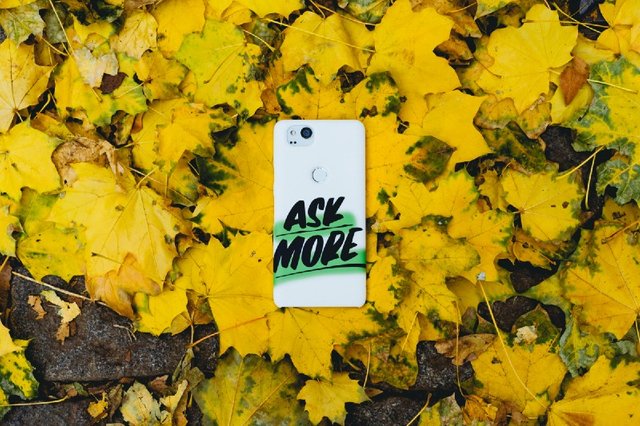Let’s talk about the nearest future of digital. Not the mini trends, which will last for a year or something. But fundamental, long lasting and industry defining.
1: Smartphones usage will continue to increase. One-screen usage will also enhance.
If your site, content and communication architecture are not yet adapted for mobile devices, and digital for you is equal to multiscreen placement, then you are a bad listener, student or retrograde.
The number of devices per user is constantly increasing, as Google Consumer Barometer reports. Two-three years ago everyone started to talk about double-screen and even triple-screen. The principle of multiscreen placement became popular. Revolutionary as for two years ago, but we continue to do this as a TRP mantra without thinking about other possibilities. There is another extreme — people who do not have a laptop or tablet. They are completely satisfied with the possession of smartphone only: for personal purposes, entertainment, job.
Some people are completely satisfied with the possession of smartphone only: for personal purposes, entertainment, job.
According to ComScore, 12% of all US Internet users are mobile only, in Spain there are 32%, in India — 70%. According to a recent iLife study of consumer habits and views on communications by Havas Worldwide, 58% of all respondents and 73% of the influencers whose behavioral patterns and consumer habits in six months will become generally accepted — they part with the smartphone only when the gadget needs recharging.
This means one thing: smartphones will become even more tight to hands for all age groups. That will require the digital-assets brands adjust appropriately.
2: Just numbers are no longer satisfying.
Digital (and marketing) uses only 20% of information from the consumer so far: figures that turn into databases, tables and summary statistics. 80% of valuable data in the form of texts, pictures, voice, audio and non-verbal information can also be analyzed. The time of the Internet and things for all passes away — so the question appears: “What can you offer to each of the target segments as a brand?”
The time of the Internet and things for all passes away.
3: “Forehead” promotions approach had become boring.
Consumers are very tired of sms-promo, discounts, 1+1 offers, “login-share-tag-friend-win”, probably. Of course, it still delivers, involving someone from the audience. Many of us just do not give up balls and love discounts. But do not whine about low loyalty and the lack of repeat purchase then. We are used to make sales in the well-known ways, but there is little hope of standing out from the clutter. We are also used to build communication on the Reach-Act-Convert-Engage principle. Is it necessary for everyone?
We are used to make sales in the well-known ways, but there is little hope of standing out from the clutter.
So What To Do?
Chat bots & conversational-based applications.
So far, in some contries, the “rulers” of brands see chat bots as an extra expense item. An item for a narrow circle of people, but not a full-fledged tool that can be useful at all stages of the life cycle and sales funnel. And what’s more, it can even become part of the content architecture.
For example, with the help of TFL Travelbot it is possible to know the public transport traffic in real time, plan your trip or communicate with the service agent directly. National Health Service chat bot aims to replace the state health support service. It’s better than first to google your symptoms and prepare for the worst then. Would you like like to make a vet appointment for your cat in a click? Then to order some necessary goods to him according to the recommendations through the same interface? My answer is yes, and it’s possible. Want a fun approach to increase brand interaction time? The BBC has already launched the Skype-bot game Doctor Who. Anyone can become a companion of Doctor Who and try to find the Key of Time: you just need to solve puzzles, add puzzles and guess puzzles.
Think about self-reproducing prophecies: if you do not provide usability to your customers, they will find it in another place.
Chat bots can be a full-fledged tool useful at all stages of the life cycle and sales funnel.
AI & Personalization.
Today we are talking about personalization with the help of AI: machine analysis and training, preferences modeling, semantic and visual recognition, mapping and so on.
For example, Alvi assistant from the brokerage company TD Ameritrade, makes up an individual plan for investor training to any user. Profit is received not only by the end user, but also by TD Ameritrade. Identifying real types of investors, the company was able not only to optimize the entire ecosystem of business, including the work of marketing and sales departments, but also did it without buying any expensive research to segment the target audience.
Think about the concept stores, where each thing is manually selected and together they are perfectly coordinated with each other. What should big retailers do if the assortment is huge and different? How can a user find his “own” thing? Adidas took care of this in the miWay application, which analyzes the style and color preferences of the user on open data, creating personalized recommendations — in short, your market of one.
AI is probably one of the simplest and right ways to creatively diversify even a banner campaign. Toyota successfully experimented in the framework of programmatic: collected data on the favorite activities of the target audience like running, cooking, dancing or drawing, then asked the algorithm to pick up pairs with the minimum probability of coincidence in one person (for example, kickboxing and bird watching). As an output they produced 300 unique and funny videos named “You Should Try”, which seeded on Facebook and Instagram with the help of interest targeting.
Actually, AI is not necessarily powerful computers or robots resulting in the form of creation and cost.
Smart Promotion.
You are not tired of the phrase Big Data, aren’t you ? I hope not: it’s still useful.
The Internet is like a huge focus group, only more sincere. In a real life you are a person with and ID, on the web you are a user under the nickname princess98, leaving a lot of other information about yourself. It just remains to gather it, process it and run a cool promo. Or maybe even become president, like Trump: it’s enough to put 69 likes in Facebook, so that your portrait with all the fears and desires was drawn up, and the banners are launched.
There are other, generous examples of combining Big Data in promo campaigns. Chevrolet gave free gasoline at gas stations for kind words. A special algorithm examined social profiles of fuel stations customers, forming a level of positivity based on the mood of publications and words used. The more positive a person was, the more gasoline he was prepared for.
And, finally, there is no better way to tell about yourself than to wedge in the disassembly between users with their comment. French Canal + and the team working on the promotion of the series “Young Pope” decided to build coverage in a non-trivial way: every time when a bad word appeared in social networks, a special algorithm “AiMEN” (created in the image of the Young Pope) answered with a quote from the Bible — according to the context.
Shake the belief stability that all the ticks can be covered with a banal media placement.
These trends are a fundamental vector that should help to forget about the phrase “Yes, we do digital support, but we do not have a digital or communication strategy.”
This is the translation for my article that has been originally posted at mmr.ua.
Thanks for reading!






Congratulations @katia.doljenko! You have completed some achievement on Steemit and have been rewarded with new badge(s) :
Click on any badge to view your own Board of Honor on SteemitBoard.
For more information about SteemitBoard, click here
If you no longer want to receive notifications, reply to this comment with the word
STOPDownvoting a post can decrease pending rewards and make it less visible. Common reasons:
Submit